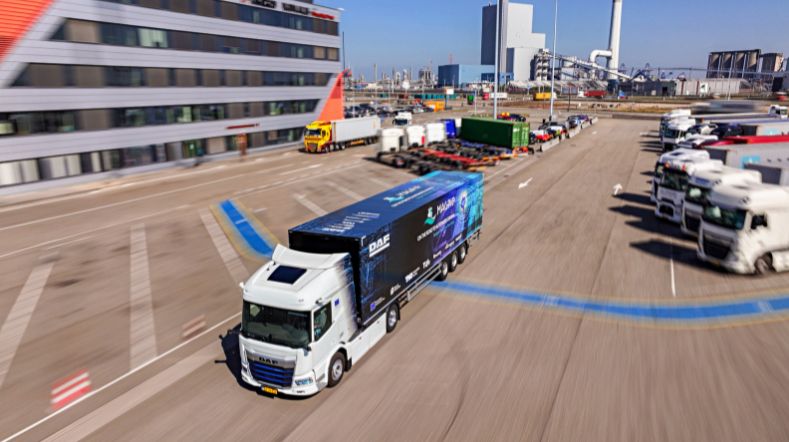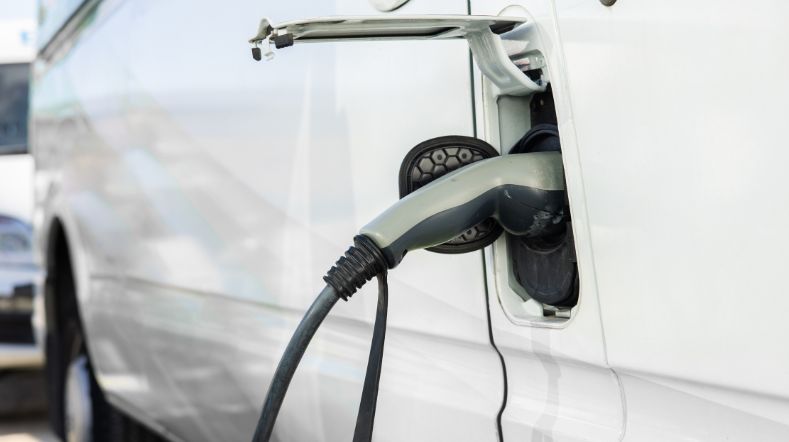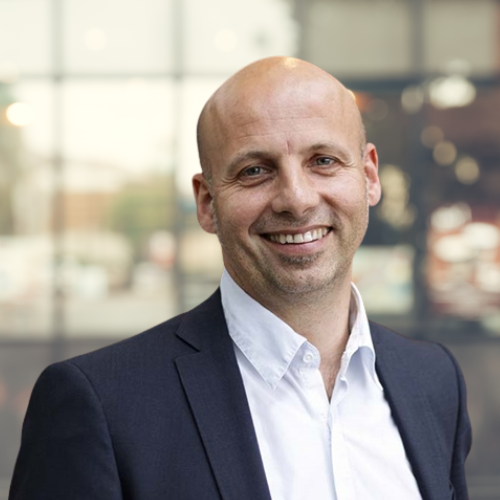
Cleaner construction thanks to smart construction logistics and accurate emission measurements
The construction sector is faced with a substantial construction challenge while also needing to become more sustainable. Using reliable construction-site emission figures and insight in smart construction logistics measures, the sector can make significant strides today. Both topics are part of the Agreements Framework, a strategic partnership of the Ministry of Infrastructure and Water Management (IenW), Rijkswaterstaat, and TNO that aims to encourage the exchange of knowledge regarding circularity and the environment, smart and sustainable mobility, infrastructure, and maritime offshore.
With just under a million new homes needing to be built in our country by 2030, the construction sector needs to pull out all the stops. Building all those homes will require a lot of heavy vehicles and machinery, much of which are not as clean as we would like them to be. The Clean and Zero-Emission Construction (SEB) roadmap aims to achieve a 60% nitrogen reduction, 75% health gain, and 0.4 Mt CO2 reduction in construction by 2030. And by 2050, construction materials need to be completely emission-free. Waiting for the technology to become more sustainable and all equipment in our country to be replaced by zero-emission vehicles and machines is not an option. Innovations in this sector are relatively slow and machines have an average lifespan of 15 years. This means that in the best-case scenario, 7% of equipment is replaced by clean equipment every year, but this seems quite unrealistic.
This is why TNO, IenW, and Rijkswaterstaat are collaborating within the Agreements Framework to find solutions that have the potential to contribute to cleaner construction in the short term.

‘You can’t understand what you don’t measure. The private sector, public authorities, and knowledge institutions in the Netherlands need reliable tools and methodologies that provide insight into the actual nitrogen emissions of our construction sector.’
Certainty through statistics
One of the projects within the Agreements Framework is the measuring and monitoring of real-world emissions on construction sites. Norbert Ligterink, senior research scientist of vehicle emissions at TNO: ‘You can’t understand what you don’t measure. The private sector, public authorities, and knowledge institutions in the Netherlands need reliable tools and methodologies that provide insight into the actual nitrogen emissions of our construction sector.’ In recent years, TNO gained considerable experience with field emission measurements in the automotive sector. In 2011, Ligterink was already urging authorities to measure vehicle emissions on the road instead of in optimised lab environments. ‘We observed a significant gap between lab and field measurements. As a solution, we developed our own equipment that was compact and light enough to use in vehicles. By running a fleet of vehicles with these TNO SEMS instruments for an extended period, we gained a clear view of the real-world NOx emissions of the car.’
Emissions from all equipment on construction sites
In 2016, TNO applied the experience it had gained to construction equipment, further developing the SEMS measurement equipment into the ‘BOEM Kit’ (the ‘Construction Emission Measurement Solution’).
‘As road traffic rapidly becomes cleaner, the share of construction machinery in the total emissions has been increasing sharply in recent years’, explains Ligterink. ‘Moreover, we quickly noticed that in construction as well, real-world emissions were substantially higher than was previously estimated on the basis of the legal requirements, because these were also based on lab tests.’ To gain a reliable picture of the total emissions from all equipment on Dutch construction sites, TNO started a large-scale inventory. ‘We have since carried out a major update, including, for example, all power generators, pile drivers, and lampposts. We now have a much better understanding of how many construction machines there are, their age, and how much they run. As a result, their total NOx emissions almost doubled. Not a pleasant message for the construction sector, but an honest one.’
Relatively simple solutions
Two of the most striking research findings immediately suggest possible short-term solutions, according to Ligterink. ‘We observed that machines generate a lot of emissions when running at less than 20% engine load. Therefore, this needs to be avoided. But that only applies to large machines, which are relatively clean. To make the construction site more sustainable, you especially need to look at the smaller equipment, such as pumps and generators. In absolute terms (in terms of emission grams per day), emissions from this type of machinery are higher than from a crane or excavator, for example. The task of cleaning up construction sites, therefore, is simpler than we think. It’s relatively easy, for example, to electrify pumps and other small equipment or to install a power supply instead of using a generator.’
Enforcement is a challenge
The value of this study for the Agreements Framework is clear to Ligterink: ‘We consider it our social duty to provide everyone in the Netherlands with accurate, up-to-date construction emission figures, so that we’re not faced with any surprises, like with Dieselgate. Anyone can work with these statistics. By measuring structurally and using the same methods, our reports remain consistent, and we keep a finger on the pulse of the sector. However, according to Ligterink, enforcement is an important point of attention. ‘Licences are always granted in advance, but who checks whether those clean machines are actually being used? That’s why we’re partnering with IenW. How can we ensure that environmental requirements apply to everyone? How can we create a level playing field? For vehicle safety in the Netherlands, we have a wonderful interplay of market surveillance, certification surveillance, and enforcement. It would be great if we could achieve the same in the realm of the environment. Our role should eventually become redundant.’

Savings potential in construction logistics
A second major emission source for this sector, which also has considerable short-term savings potential, is construction logistics. The environmental impact of construction logistics is at least as great as that of all the equipment used on the construction site. As much as a quarter of all nitrogen emissions of road transport are caused by vehicles transporting materials and people to construction sites. This insight partly came about thanks to TNO’s field emission measurements.
In recent years, TNO has used applied research to demonstrate that there are several measures to significantly reduce the environmental impact of construction logistics. One of the valuable savings measures is to work with a construction hub.
Success with construction hubs
All construction logistics flows are coordinated and monitored from construction hubs on the outskirts of the city. ‘At the De Trip construction project in Utrecht, together with Bouwend Nederland and others, we convincingly demonstrated the savings potential of this kind of hub for the first time’, explains Siem van Merriënboer, logistics consultant at TNO Mobility & Logistics. ‘The savings in the number of downtown trips, time spent on site, and their associated emissions, turned out to be significant.’
The construction hubs also bore fruit in other projects, after which we looked at their larger-scale application with policymakers. At the city or even provincial level, with larger hubs. For Amsterdam in particular, we investigated whether hubs combined with water-based construction transport could be a cleaner and less stressful alternative to unburden vulnerable quays and bridges in the capital. Van Merriënboer: ‘With these projects, we demonstrated what the sustainable contribution of these kinds of smart construction logistics measures can be, and which are most effective.’
Construction Logistics@Work
Research evidence alone is not enough to get an entire chain moving. This requires broad awareness. One of the resources deployed by TNO together with partners IenW and Rijkswaterstaat within the Agreements Framework is the serious game Construction Logistics@Work. ‘With this game, we want to encourage contractors, clients, transporters, shippers – everyone within the chain – to start talking to each other about the options available to make construction logistics more sustainable’, Van Merriënboer explains. ‘What is it like to step into the role of a contractor on a construction site and be responsible for the construction process there? The game consists of two rounds. The first round shows how things are going now. In the second round, players have the opportunity to invest in some construction logistics measures. In this way, players get to experience for themselves that the logistics process runs more smoothly if they invest in better chain cooperation or a construction hub.’
The serious game is intended for all parties in the chain, but also for educational institutions, to familiarise future employees in this sector with sustainable construction logistics.

‘In construction, it’s important that we do not only focus on the technology transition, but also on a process transition.’
Sustainable behavioural change needed
‘In construction, it’s important that we not only focus on the technology transition, but also on a process transition’, notes Siem van Merriënboer. ‘This coincides with a number of innovation trends in the construction sector, such as industrial and prefabricated construction, for which logistics are also important.
Van Merriënboer believes that sustainable behavioural change and the culture within the construction sector needs to be given more attention. ‘This serious game contributes to this greatly. We also noticed this in our partnership with IenW and Rijkswaterstaat within the Agreements Framework. Thanks to the game, we started talking to them about the topic and finding out what the options are. There’s still a lot of ground to be gained, something for which all involved parties share a responsibility.‘
Get inspired
Demonstrations of automated driving and charging for logistics at Maasvlakte


Optimal charging planning for logistics service providers considering grid congestion


Sustainable logistics



